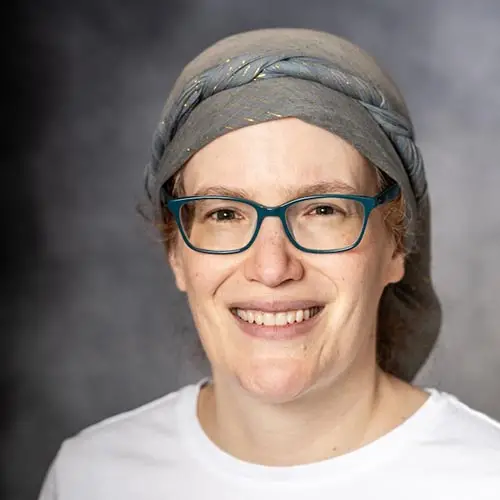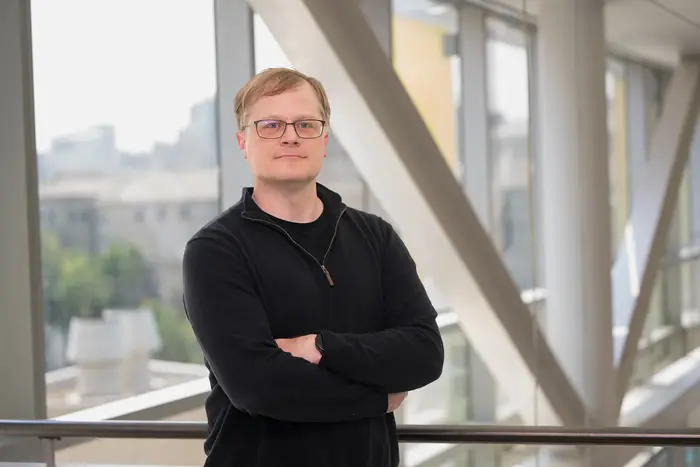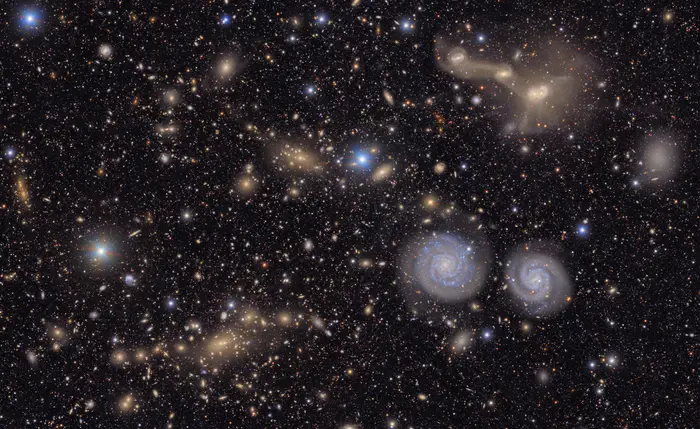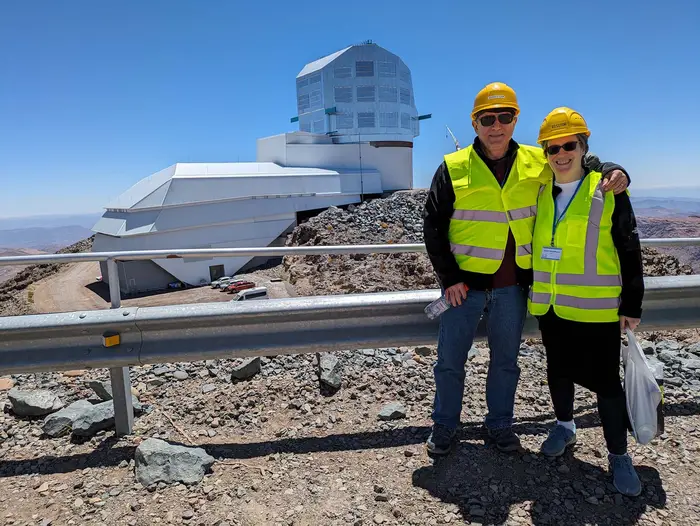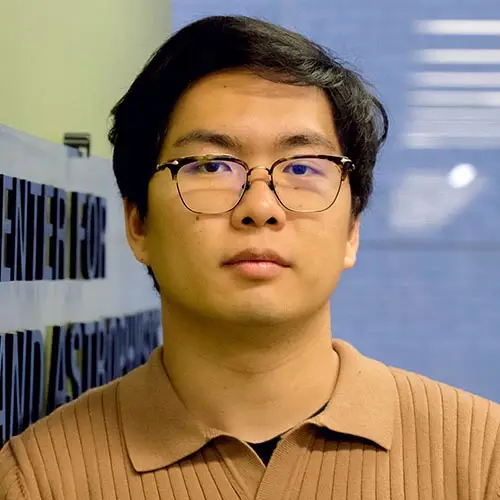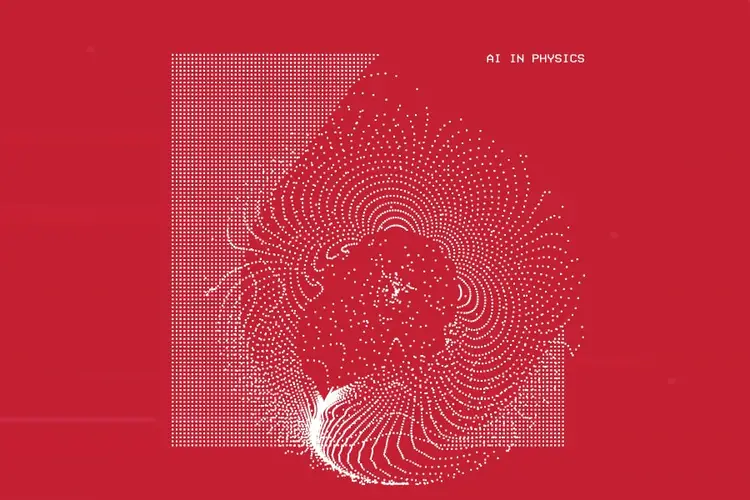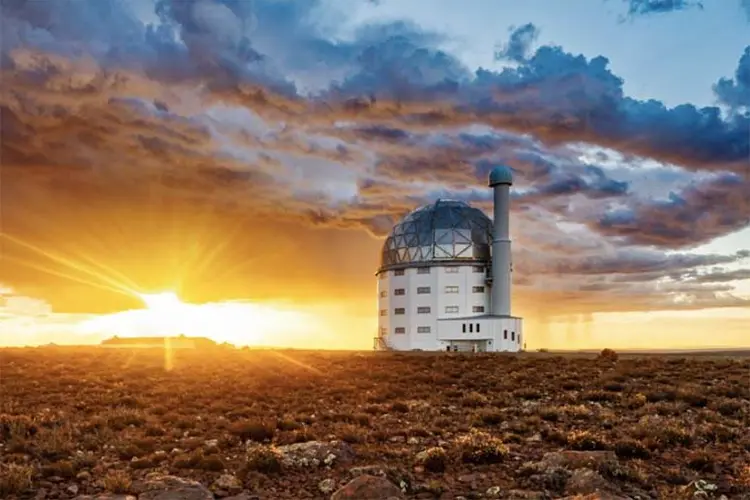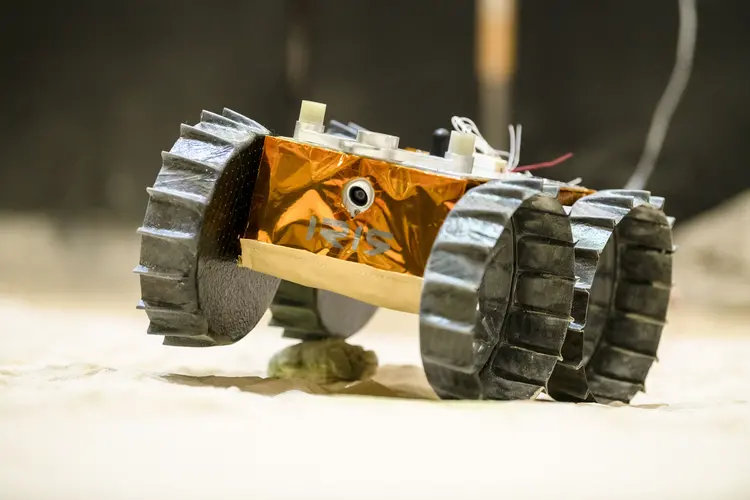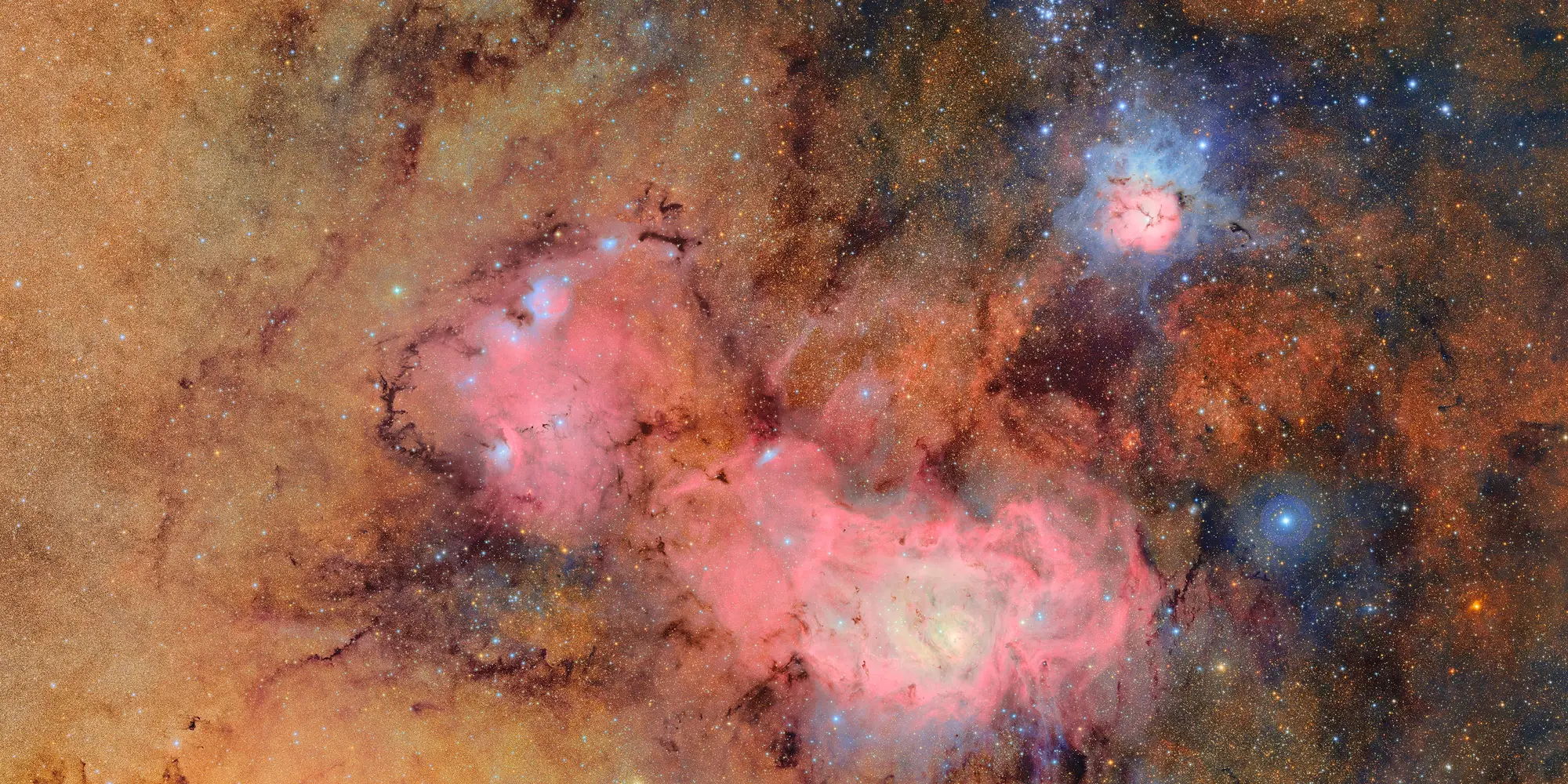
Rubin’s First Snapshots Launch a Decade of Discovery
Scientists and engineers at CMU’s McWilliams Center for Cosmology and Astrophysics are building tools to aid astronomers around the world.
Media Inquiries
If a comet streaks past a star later this year, the Vera C. Rubin Observatory will be watching — with help from scientists at Carnegie Mellon University. With the release of its first 3,200-megapixel images, Rubin, an astronomy and astrophysics facility in Chile, will soon begin its decade-long mission to capture the cosmos in motion.
The Legacy Survey of Space and Time(opens in new window) (LSST) carried out by Rubin will take a new photo of the southern sky every 40 seconds to create what promises to be the most detailed timelapse of the universe ever created. Behind the scenes, researchers at CMU's McWilliams Center for Cosmology and Astrophysics are creating the tools that will turn Rubin's stunning visuals into scientific breakthroughs.
Think of it as a living movie of the universe. Each night, the observatory will capture millions of events where the brightness of objects changes over time. Transient events can be massive supernovae or minor asteroids and can take fractions of a second to years to complete. Images of these events contain key clues to the history of the universe.
The data science tools needed to process this immense stream of information into scientific breakthroughs can also advance astrophysics and fuel new technologies in fields like AI, imaging and data infrastructure.
By the Numbers
The Legacy Survey of Space and Time is the world's most ambitious optical sky survey, and could help answer some of the biggest questions in the universe.
- 10 years of operation.
- 60 petabytes of raw data.
- 40 billion stars, galaxies, asteroids.
- 30 trillion observations.
Interim Head of Physics Rachel Mandelbaum(opens in new window) is co-PI of the Schmidt Sciences(opens in new window) supported LSST Interdisciplinary Network for Collaboration and Computing (LINCC) Frameworks program to develop state-of-the-art analysis tools capable of meeting the scale and complexity demanded by the Rubin data.
“Rubin has the unprecedented capability to reveal the history and evolution of our solar system, galaxy, and even the entire universe,” said Mandelbaum, a professor in Carnegie Mellon’s McWilliams Center for Cosmology and Astrophysics(opens in new window). “And the software that we’re developing will help the entire astronomical community to turn that data into discoveries. The scientific opportunities and the data analysis challenges are both incredible.”
Planetary insurance to cloud AI
LINCC Frameworks leverages Carnegie Mellon’s strengths and ingenuity to bring together foundational science with artificial intelligence, robotics, engineering and data analytics. Jeremy Kubica is the engineering director for the joint initiative by Carnegie Mellon, the University of Washington and the LSST Discovery Alliance.
“This is a multidisciplinary team whose goal is to enable science on the Rubin telescope by creating open-source software that the astronomy community can use to process volumes of data that might not be possible with existing libraries or existing techniques,” Kubica said.
Kubica graduated from Carnegie Mellon with a Ph.D. in robotics(opens in new window) in 2005. As a student, he built algorithms to detect asteroid threats. As a co-lead of the Pittsburgh Google office and engineering director for Cloud AI, he oversaw the development of new products and novel AI and large-scale machine learning techniques.
When approached about joining the LINCC Frameworks team and the McWilliams Center in 2022, he said it was too good a chance to pass up.
“It’s an amazing opportunity in terms of the environment you get to work in, and who you get to work with,” Kubica said. “We have a team of scientists and software engineers working closely together with each person bringing their expertise to identify important problems for the science community and solve them with software engineering best practices.”
What will Rubin reveal?
Kubica leads a team of about 10 engineers developing a series of products to help scientists identify which massive stars are exploding so we can learn more about the origin, evolution and ending of rare stars; understand how the universe is expanding and what is the mysterious dark energy that causes its expansion to accelerate; and locate and track moving objects such as asteroids in the solar system, including potentially dangerous objects headed toward Earth.
Monday’s images are the culmination of years of design, planning and construction, but they are not the end for the LINCC Frameworks team and other scientists working on Rubin.
“We’re going to see new questions that weren’t initially anticipated,” Kubica said. “Throughout the entire life of the survey I expect we’ll see continuous new areas to explore. The first images may feel like a finish line, but at the same time, it’s a starting line for scientific discovery. The possibilities for science are amazing.”
Space-age solutions transform life on Earth
Astronomy and space exploration drive innovation. NASA research has contributed to advancements in water filtration, coatings for space helmet visors are now used to create scratch-resistant lenses for sunglasses, shock absorbent padding for spacesuits is now widely used in mattresses and pillows, and the need for lightweight, portable tools in space led to the development of cordless power tools.
“When we’re doing this work, we’re driving innovation in ways that will spread way beyond studies of cosmology and astronomy and benefit society,” Mandelbaum said.
The United States has a long history of fundamental research leading to practical applications decades later. Quantum mechanics is one example. A part of theoretical physics research that began in the early 1900s, its applications can be seen decades later in computers, medical imaging and global positioning systems.
“A large portion of the U.S. GDP is related to devices that wouldn’t exist if we didn’t know about quantum mechanics,” she said. “Understanding fundamental physics has long-term societal benefits that are difficult to predict at the time you’re doing the research.”
Mandelbaum said that telescopes like Rubin help advancements in areas such as imaging, optics, sensors and materials for use in defense, aviation and manufacturing.
The big data tools that the LINCC Frameworks team is developing have applications in areas such as artificial intelligence, finance and logistics.
Another outcome of studying space — A talent pool of professionals skilled in software development, quantitative analysis and problem-solving.
For example, Chanhyuk (Andy) Park(opens in new window) is working at Argonne National Laboratory on resolving tricky challenges that arise during long-term cosmology surveys. Because of his expertise learned at Carnegie Mellon as a doctoral candidate in physics, he earned a fellowship from the Department of Energy through the Office of Science Graduate Student Research Program (SCGSR).
Park focuses on enhancing gravitational lensing to make current approaches more accurate. His work takes raw telescope data and uses computational methods to provide more detailed images of what galaxies look like and how large they are. At Argonne since January 2025, he has been helping researchers develop methods to analyze the Rubin data.
Mandelbaum said not all of the students and postdoctoral fellows trained at Carnegie Mellon’s McWilliams Center spend their careers in cosmology and astrophysics.
“A lot of them will go out into the world and join the workforce as well-trained and well-educated people who help support science, technology, engineering and math that move the country forward,” Mandelbaum said.
The McWilliams Center for Cosmology and Astrophysics at Carnegie Mellon brings together research in particle physics, astrophysics, computer science and statistics to advance understanding of the dark part of the universe. Work at CMU for the Rubin Observatory is supported by the Department of Energy Office of Science's High Energy Physics program.
